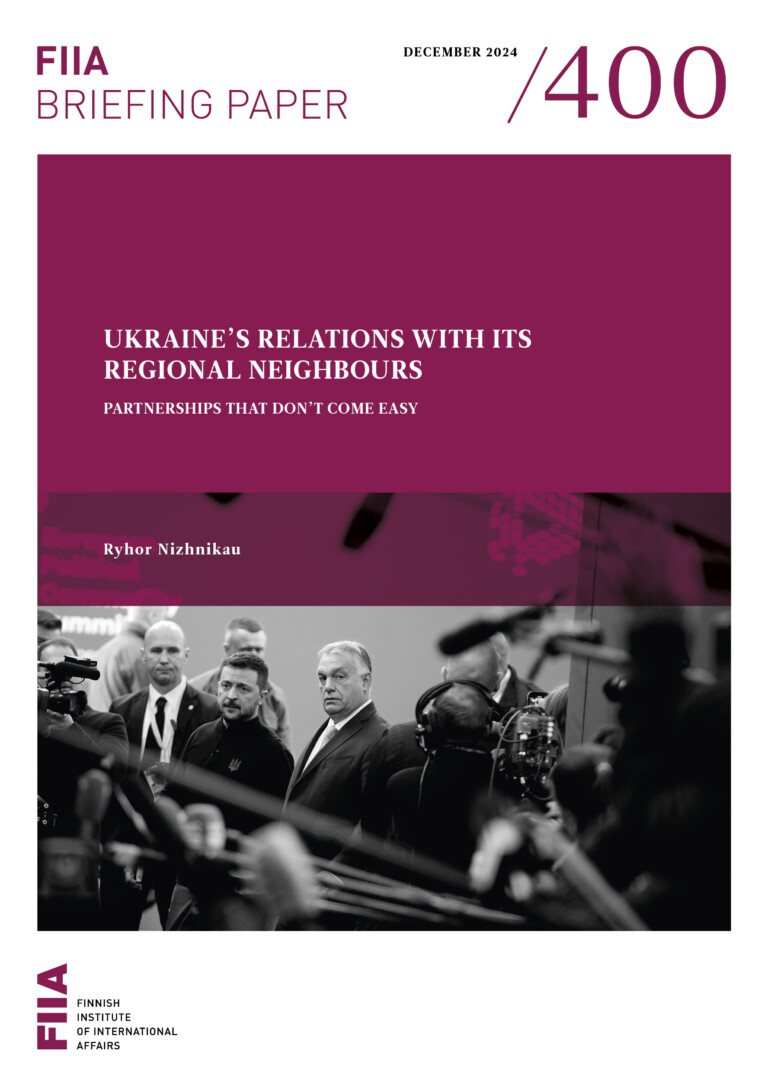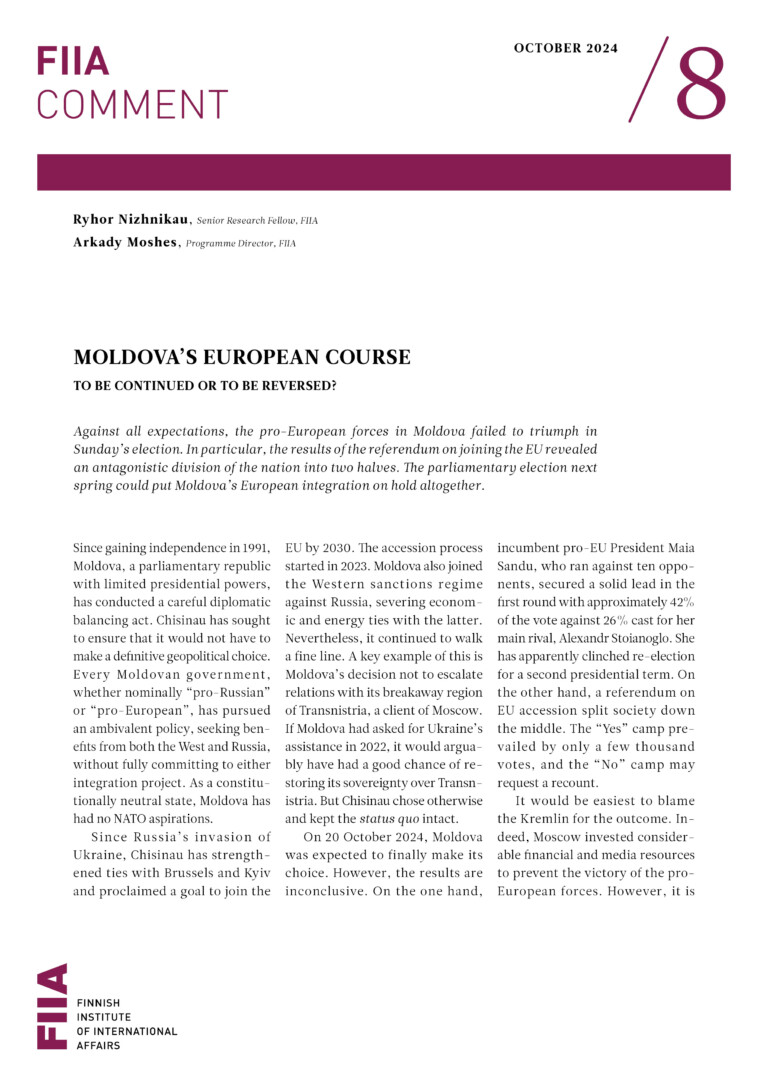The EU has a strategic goal to build political association and economic integration with the six countries included in its Eastern Partnership policy. To reach this goal, it has invented a new model of association agreement that includes deep and comprehensive free trade. At best, three out of six Eastern partners are likely to sign the agreements within the next couple of years.
The low level of democracy and the rule of law in the neighbourhood may eventually block the new agreements with most partners or, if the EU loosens the political criteria, undermine the credibility of the Union. The deadlock of the EU–Ukraine agreement because of ‘selective justice’ sets a strong precedent for the other neighbours and tests the leverage of the Eastern Partnership.
The new model of association agreement is too little for some Eastern neighbours and too much for others. The EU needs to differentiate clearly between an ambitious “European Agreement” for reform-oriented partners and more limited cooperation agreements for others. The EU will have to re-consider its (so far negative) position on the membership perspective for the most advanced partners in late 2013, when Moldova and Georgia may be close to concluding the new agreement.
The EU has limited tools to ensure the implementation of the new agreements. In order to increase the effectiveness of the association agendas, the EU needs to encourage domestic civil society to monitor their implementation.
Russia is stepping up efforts to establish a Eurasian Economic Union as a regional integration project that competes with the EU. In spite of the EU’s weakened attractiveness, an association agreement with the EU is still likely to offer more sustainable economic development and a larger degree of political self-determination for its Eastern partners.







